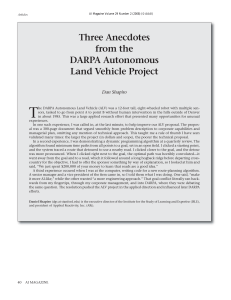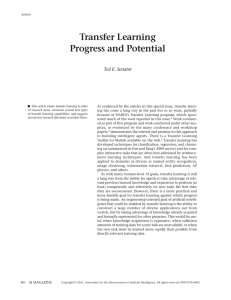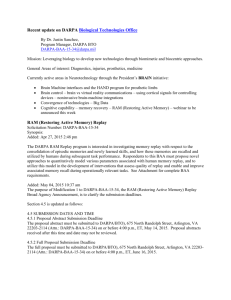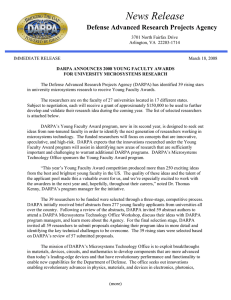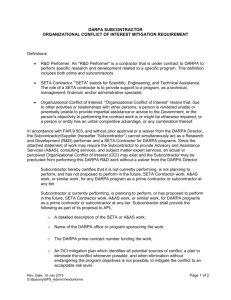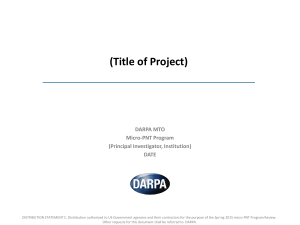ECE 507 Seminar (Spring 2015)
advertisement
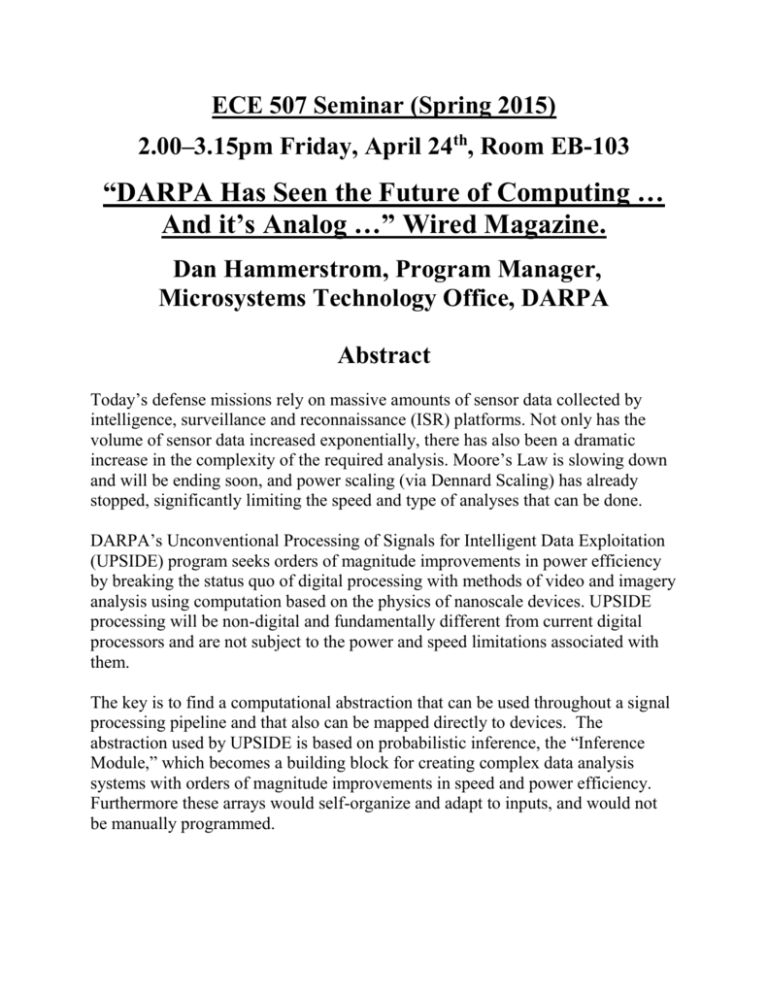
ECE 507 Seminar (Spring 2015) 2.00–3.15pm Friday, April 24th, Room EB-103 “DARPA Has Seen the Future of Computing … And it’s Analog …” Wired Magazine. Dan Hammerstrom, Program Manager, Microsystems Technology Office, DARPA Abstract Today’s defense missions rely on massive amounts of sensor data collected by intelligence, surveillance and reconnaissance (ISR) platforms. Not only has the volume of sensor data increased exponentially, there has also been a dramatic increase in the complexity of the required analysis. Moore’s Law is slowing down and will be ending soon, and power scaling (via Dennard Scaling) has already stopped, significantly limiting the speed and type of analyses that can be done. DARPA’s Unconventional Processing of Signals for Intelligent Data Exploitation (UPSIDE) program seeks orders of magnitude improvements in power efficiency by breaking the status quo of digital processing with methods of video and imagery analysis using computation based on the physics of nanoscale devices. UPSIDE processing will be non-digital and fundamentally different from current digital processors and are not subject to the power and speed limitations associated with them. The key is to find a computational abstraction that can be used throughout a signal processing pipeline and that also can be mapped directly to devices. The abstraction used by UPSIDE is based on probabilistic inference, the “Inference Module,” which becomes a building block for creating complex data analysis systems with orders of magnitude improvements in speed and power efficiency. Furthermore these arrays would self-organize and adapt to inputs, and would not be manually programmed. Biography Dan Hammerstrom joined DARPA as a Program Manager in March, 2012. He came to DARPA from Portland State University, where he is a Professor in the Electrical and Computer Engineering (ECE) department. From 1977 to 1980, Dr. Hammerstrom was an Assistant Professor in the Electrical Engineering Department at Cornell University. In 1980 he joined Intel in Oregon, where he was involved in computer architecture and VLSI design. In 1988 he founded Adaptive Solutions, Inc., which specialized in high performance silicon technology (the CNAPS chip set) for image processing, neural network emulation, and pattern recognition. In 1998 he joined the Oregon Graduate Institute. He then moved to Portland State in 2005. Dr. Hammerstrom is a Life Fellow of the Institute of Electrical and Electronic Engineers (IEEE). He has been a Visiting Scientist at the Royal Institute of Technology in Stockholm, Sweden and the NASA Ames Research Center. Currently he has a joint faculty appointment with Halmstad University, Halmstad Sweden. He received a PhD in Electrical Engineering from the University of Illinois at Urbana-Champaign in 1977. All welcome
